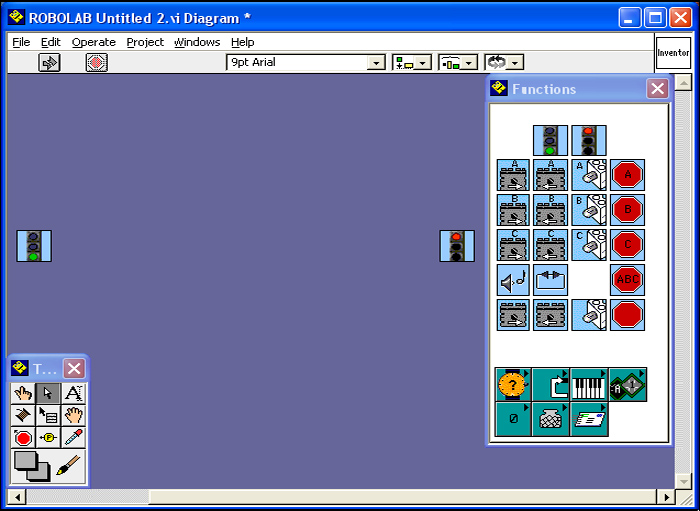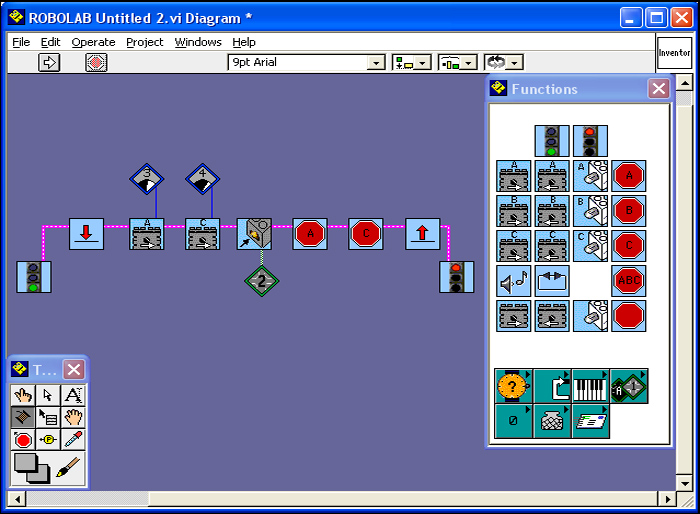The first image is of the starting template found in Level 4 Inventor. There is a stop-and-go light with green lit up and one with red. Between these two lights is where the program goes. There is a functions palette on the right and a tools palette on the bottom left. Both of these palettes will be used regularly in programming. In this overview we will go over a program that illustrates many, but not all of the options in Robolab.


